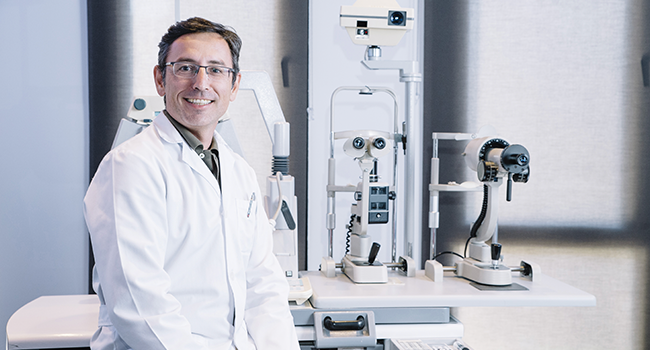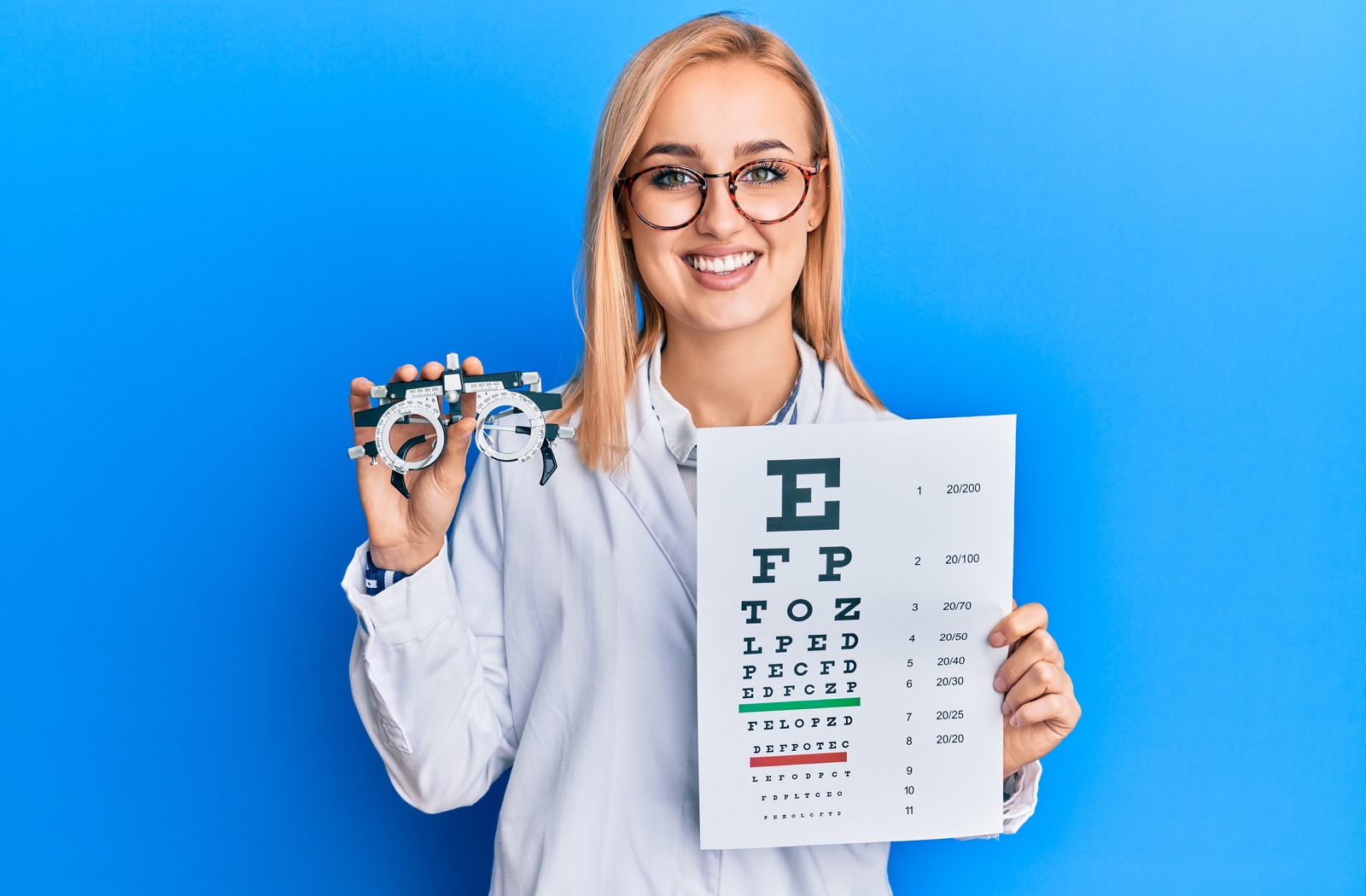Why Choosing an Eye Doctor Optometrist is Important for Your Eyes
Exploring the most recent Technological Advancements in Optometry and What They Mean for Eye Doctors
In the ever-evolving area of optometry, recent technical developments are improving exactly how practitioners come close to eye care. From the accuracy of Optical Coherence Tomography to the nuanced understandings provided by AI-driven diagnostic tools, these advancements are setting new standards in patient evaluation and therapy. Teleoptometry is poised to redefine accessibility, making sure that experience transcends geographical constraints. As these developments penetrate the method, optometrists are confronted with the challenge of welcoming these tools to improve person results. Yet, the inquiry remains: how will these technological changes redefine the duties and responsibilities within the occupation?
Technologies in Diagnostic Devices
Advancing the area of optometry, advancements in diagnostic tools have reinvented the method eye treatment specialists evaluate and identify aesthetic disabilities and eye conditions. The past years has observed substantial technological innovations, enabling even more exact and extensive examinations.
An additional trick innovation is the intro of sophisticated corneal topography systems, which map the surface area curvature of the cornea with accuracy. These devices are especially beneficial for suitable contact lenses and identifying corneal conditions. Furthermore, electronic retinal imaging has changed standard ophthalmoscopy, providing thorough, scenic views of the retina that help with comprehensive visual examinations.
The development of wavefront aberrometry has likewise been vital, making it possible for the analysis of refractive mistakes with unparalleled precision (Eye Doctor). This innovation helps in personalizing rehabilitative lenses and boosting surgical end results for refractive surgical procedures. Jointly, these diagnostic developments equip optometrists to deliver exceptional client care, guaranteeing early intervention and customized therapy methods, eventually enhancing visual health outcomes
AI in Patient Monitoring
Building on the foundation of cutting-edge analysis tools, the consolidation of man-made knowledge (AI) in person management stands for a transformative jump for optometry. AI systems are progressively employed to improve performance, accuracy, and customization in client treatment.
Furthermore, AI-driven systems help with structured patient communications and management processes. Automated scheduling, online assessments, and individualized follow-up plans not only boost patient contentment however additionally optimize time administration for professionals. These systems can triage people based on the seriousness of their problems, ensuring that those in vital demand receive timely interest.
In addition, AI enhances decision-making by offering eye doctors with evidence-based referrals and therapy pathways. By integrating data from digital wellness documents, AI tools provide insights that notify professional decisions, decreasing the danger of mistakes and boosting person outcomes. As AI remains to develop, its function in person administration will likely broaden, improving the landscape of optometric treatment.
Advancements in Retinal Imaging
In the world of optometry, retinal imaging has actually observed impressive technical advancements that are enhancing diagnostic capabilities and patient care. Innovations such as Optical Coherence Tomography (OCT) and fundus digital photography have actually revolutionized just how eye doctors picture and examine the retina. OCT, specifically, gives high-resolution, cross-sectional photos of the retina, enabling the in-depth evaluation of its layers. This capability is important for early discovery and monitoring of conditions like glaucoma, diabetic retinopathy, and age-related macular deterioration.
Enhanced imaging modalities like OCT angiography are more refining diagnostic accuracy. This non-invasive technique maps blood flow in the retina, offering critical understandings into vascular health and wellness without the need for color shots. Furthermore, adaptive optics innovation is being incorporated into retinal imaging systems to remedy ocular aberrations, supplying unprecedented photo clearness. Such advancements assist in the identification of minute retinal adjustments that might indicate illness development.
Moreover, advancements in man-made knowledge are enhancing retinal imaging by allowing computerized analysis of big datasets. These systems aid optometrists in recognizing patterns indicative of pathology, consequently boosting diagnostic accuracy and effectiveness. Jointly, these technologies are changing retinal imaging into a foundation of modern-day eye care, improving results and broadening healing possibilities.
Teleoptometry's Growing Function
Teleoptometry is increasingly ending up being an essential part of eye treatment, driven by innovations in electronic communication and analysis tools. As optometry embraces additional resources digital transformation, teleoptometry helps with remote examinations, enabling optometrists to extend their services past typical borders. This is specifically beneficial in underserved and country locations where access to specialized eye care is usually restricted. By leveraging high-resolution video conferencing and advanced retinal imaging, eye doctors can perform detailed eye examinations from afar, guaranteeing timely diagnosis and treatment.
The assimilation of fabricated knowledge (AI) further enhances teleoptometry, making it possible for the evaluation of aesthetic information and helping in the discovery of ocular conditions such as glaucoma and diabetic retinopathy. AI-powered formulas can quickly interpret complex imaging data, giving optometrists with valuable understandings that bolster medical decision-making.
Additionally, teleoptometry supports continuity of care through smooth integration with digital health documents (EHRs), allowing eye doctors to keep extensive patient histories. This ensures that individuals obtain customized and constant treatment even when speaking with various specialists.
Regardless of these advantages, difficulties continue to be, consisting of ensuring data protection and taking care of patient expectations. Teleoptometry stands for a substantial stride in the direction of more accessible, efficient, and patient-centered eye care. As modern technology evolves, its function is poised to expand even more.

Future Patterns in Eye Care
A myriad of cutting-edge fads is established to improve the future of eye treatment, driven by technological improvements and the advancing demands of people. One substantial fad is the assimilation of expert system (AI) in diagnostics, which promises to enhance the accuracy and effectiveness of eye exams. AI formulas can evaluate large amounts of information from retinal pictures, potentially spotting conditions like diabetic person retinopathy and glaucoma earlier than standard techniques.
Moreover, customized medication is getting traction in optometry, with hereditary screening informing tailored therapy plans. This strategy intends to enhance patient outcomes by tailoring treatments to specific genetic profiles. Wearable modern technology, such as wise get in touch with lenses, is additionally on the perspective, using real-time tracking of intraocular pressure or sugar levels, therefore providing continual insights right into ocular and systemic health.
The fostering of augmented truth (AR) and virtual truth (VIRTUAL REALITY) in training and client education and learning is one more arising trend. These modern technologies provide immersive experiences that can enhance understanding and skills both for people and optometrists. As these patterns evolve, optometrists have to stay abreast of technical developments to supply advanced treatment, guaranteeing enhanced patient results and satisfaction in the dynamic landscape of eye treatment.
Verdict

Collectively, these analysis improvements equip optometrists to supply review remarkable client care, making certain early intervention and customized therapy techniques, ultimately boosting visual health end results.

As these innovations proceed to develop, optometrists need to adjust and include them right into method, eventually optimizing process effectiveness and boosting the standard of eye treatment supplied to people.